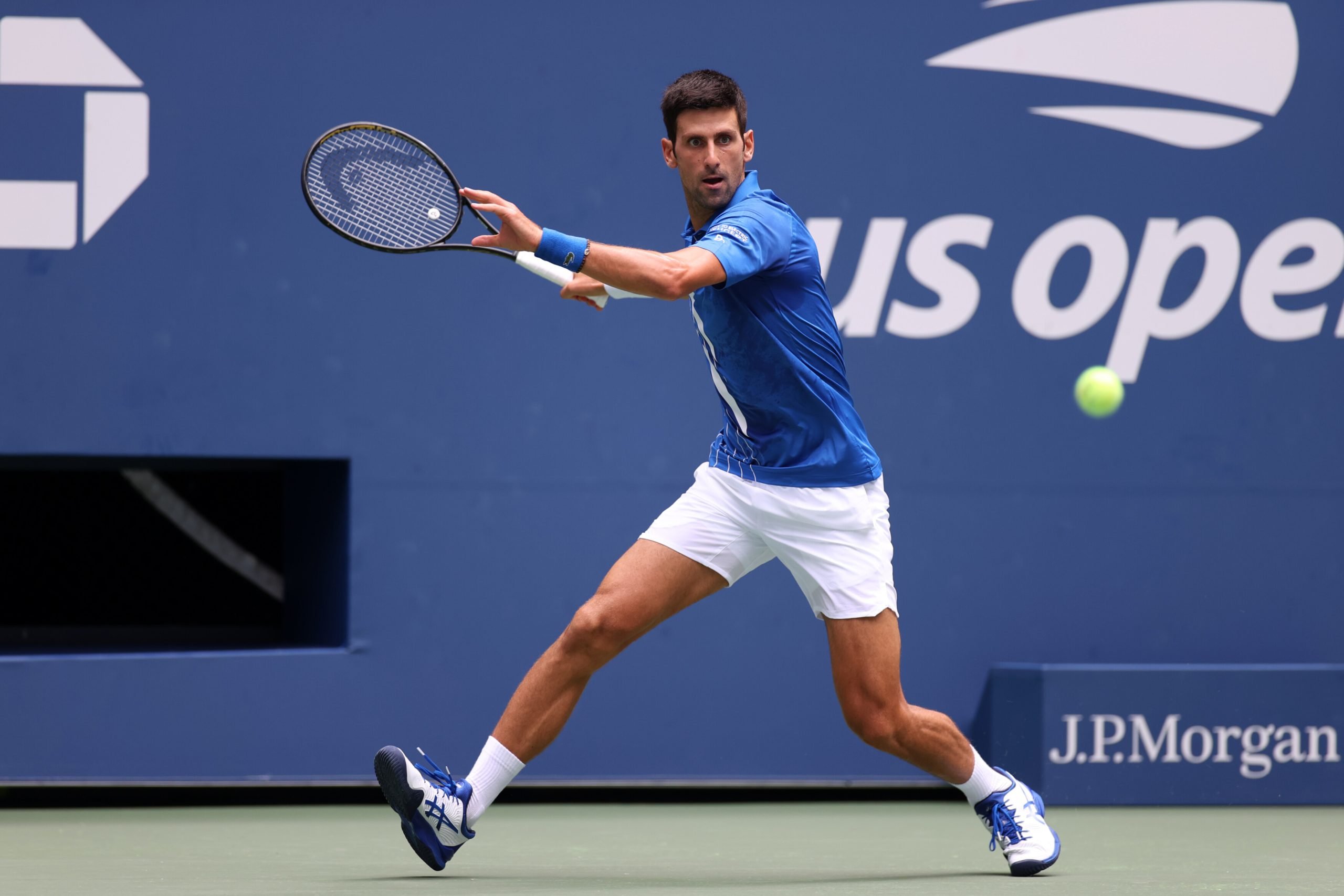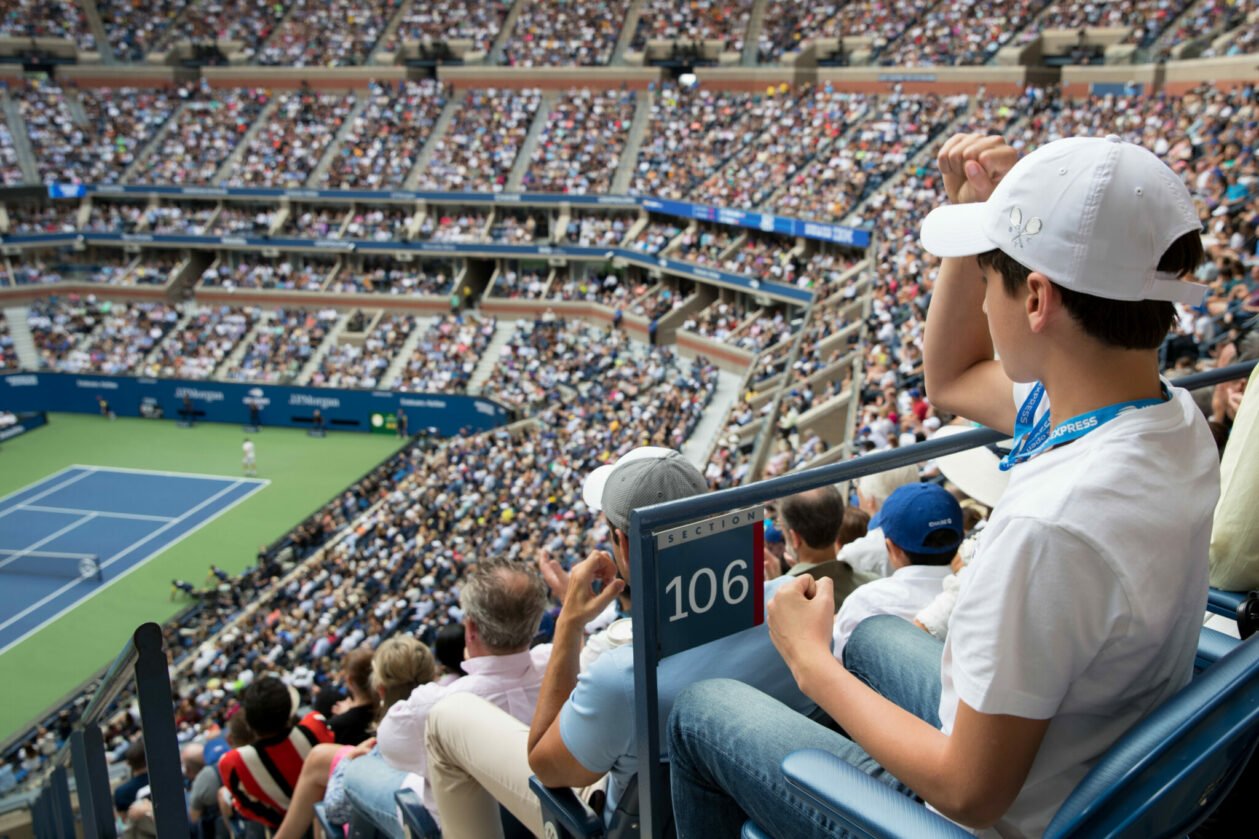Some familiar faces will be missing when tennis’ U.S. Open begins on Monday, August 30, at Flushing Meadows in New York City, close to the 7 subway line and the Citi Field stop on the Long Island Railroad. Specifically, Roger Federer, Rafael Nadal, the Williams sisters and last year’s champion Dominic Thiem, among others, won’t be taking their talents to Queens, in most cases due to injury.
Thousands of European tennis fans won’t be in attendance, either, due to COVID-related travel restrictions. And while the absence of Nadal and Federer makes Novak Djokovic’s quest for his record-breaking 21st major, and the calendar-year Grand Slam that much easier, there’s one person who really shouldn’t miss this year’s Open.

That’s you.
If you’ve never been, the U.S. Open has a New York state of mind that even the pandemic cannot diminish. Tennis fans of the five boroughs can be so raucous and disruptive that attending the matches in Queens can remind you of the old Rodney Dangerfield line: “I went to a boxing match the other night, and a hockey game broke out.”
In other words, in New York, tennis isn’t just a spectator sport. Here, the spectators are the sport. Some players love the rowdy atmosphere, and some feel uncomfortable in a crowd so spirited. But the result is that the players bring out their best for New York, the last of the four majors after the Australian Open, Wimbledon and Roland-Garros in Paris.
For spectators, the U.S. Open is a moveable feast. Of course, the feast stays put, and you move, from the main court named for tennis legend Arthur Ashe, to the multitudinous side courts, where you can sit a few feet from the action—the action being some of the greatest tennis in the world today.

You can come for the day and watch hour upon hour of matches, or you can come for the evening and be sure to catch at least one headliner. Either way, it’s hard not to get caught up in the revelry and excitement, especially this year when Djokovic is poised to make tennis history.

Right now, the Big Three—Djokovic, Nadal and Federer—have each won 20 majors. Federer is 40, an unthinkable age for a tennis star, and we may have seen the last of him when he slipped on the slick grass at Wimbledon this past spring. Nadal contorts his body so violently with every swing that it’s amazing he can still walk or wave to a friend, let alone continue to play highest-caliber tennis.
Which leaves Djokovic in a class all by himself. You can think of Djokovic as tennis’ Tom Brady, an athlete who looks after his body so carefully that he is seemingly ageless and seemingly immune to wear and tear. There’s nobody of Djokovic’s stature in the draw at this year’s U.S. Open, which means that the Serb will either win the tournament, his 21st major and the Grand Slam, or he will essentially have beaten himself.
Yet Djokovic’s quest is not the only reason to come to the Open. Not since 1997 have we seen a draw at any major in which neither Federer, Nadal nor the Williams sisters showed up. It appears that tennis has begun its transition to a post-Federer and post-Nadal era, even if they come back for another year or so. Who will step up and take their places, or who will at least compete to keep Djokovic under 30 majors for his career? We’ll begin to find some answers at Flushing Meadows next week.
Some fans study the draw that’s published online the day before the matches and create an itinerary for themselves, so they know where they’ll start off—say, at the main court to catch a key match and then venture out to a distant court to sit close while watching a potential star in the making. Other fans more inclined towards serendipity will just wander into whatever court their spirit leads them—and come upon whichever current or future stars they may encounter. Either way, you can’t lose.
My own history with the U.S. Open goes all the way back to the 1970s, when I saw matches contested at Forest Hills, the predecessor to the current venue built on the site of the 1939 and 1964 World’s Fairs. Tennis had a pre-Federer run of glory days in the late ‘70s and early ‘80s, when beasts like Jimmy Connors, John McEnroe, Ilie Năstase, Andre Agassi, Chris Evert, Billie Jean King, Margaret Court, Virginia Wade and, my personal favorite, Björn Borg, bestrode the earth. One of the highlights of my own pilgrimages to the U.S. Open took place in the early ‘80s, when a young Aaron Krickstein upset an astonished, and quite possibly hungover, Vitas Gerulaitis, on a side court in front of about 60 or 70 hardcore fans.
That match might have taken place four decades ago, but it lives on in the memory of all who saw it, myself included. That’s the beauty of the U.S. Open. The tennis players make history, and then it becomes the history of the tennis fans.
So, take the 7 train to Flushing, or the Long Island Railroad, or if you are preternaturally bold, drive there. If you love tennis, it’s only the greatest show on earth.







